We went to an open day at the Woodland Enterprise Centre (the home of WoodNet) today. Tracy works for them part time, but for me it was just good fun!
The most interesting thing we saw was Gervais Sawyer building a "Wallis Grid". Here's a little model: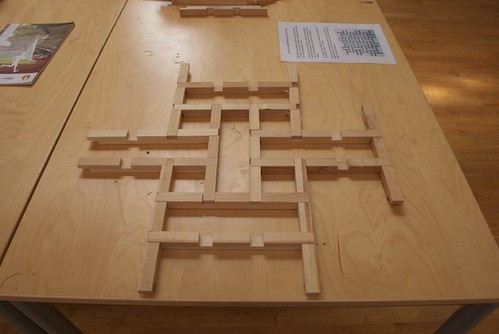 and here's the full size version!
and here's the full size version!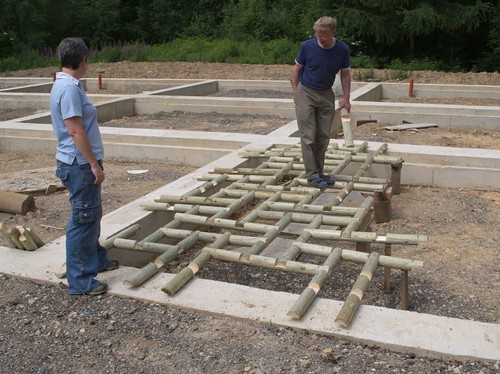 The amazing thing is it uses no glue or nails! Read the rest of the post to see how it was made...
The amazing thing is it uses no glue or nails! Read the rest of the post to see how it was made...
The design is named after John Wallis, about whom I found some info here:John Wallis was the Savilian Professor of Geometry in Oxford for just over 50 years around the second half of the 17th century. He was a most remarkable figure - probably the leading English mathematician of that era apart from Newton. His appointment to the Savilian Chair may have come about as a reward for deciphering intercepted Royalist dispatches during the Civil War.
To make it, Gervais was sawing half way through poles in four places:
...
In much of his mathematical work, one can detect his interest in patterns of both symbols and numbers - with echoes of his skill as a decipherer. This interest in patterns is obvious in his single foray into structural engineering.
...
Wallis tackled a practical problem - how to provide a flat structure such as a roof to span a large square open space, using only wooden beams much shorter than the required span and only supported around the edges. He devised a repeating pattern of short but interlocking beams, which could be extended to span any sized space. Each beam within the body of the pattern is supported at its ends by other beams, and provides end supports for two other beams. All these internal beams are identical. The whole pattern is only supported around the periphery. The edge beams are shorter and each rest on an external support only at their outside end. Individually, these edge beams are also supported by the internal array at their inner ends. They themselves support the array at their centres. Overall, this is a clever but somewhat confusing arrangement of short interleaved structural elements, making up a repeating pattern. than using an adze to knock four chunks out, the middle two on one side, and the end two on the other:
than using an adze to knock four chunks out, the middle two on one side, and the end two on the other: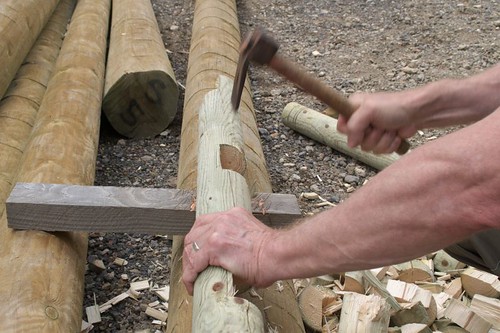 Each piece was then added to the structure:
Each piece was then added to the structure: with trimming as required to make it fit:
with trimming as required to make it fit:  Here's a view of part of the structure:
Here's a view of part of the structure: I'd love to make one - perhaps it could for a roof for our new shelter....?
I'd love to make one - perhaps it could for a roof for our new shelter....?
The other neat thing we saw was based on thin discs of wood. If you cut them thin enough (in this case done with a chainsaw mill), then as they dry they don't split but instead form domes: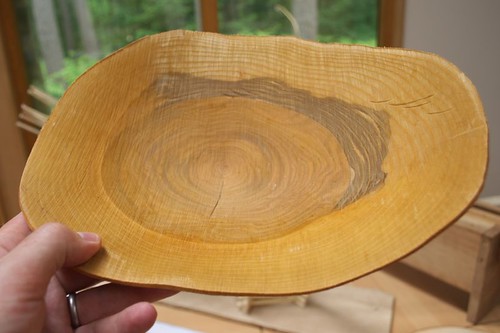
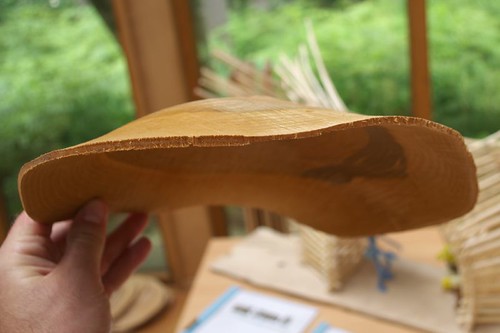 and then, you can tack them together to form various structures:
and then, you can tack them together to form various structures: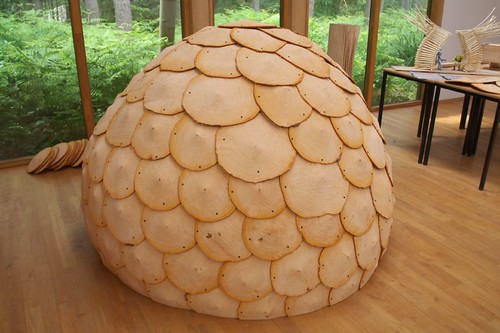
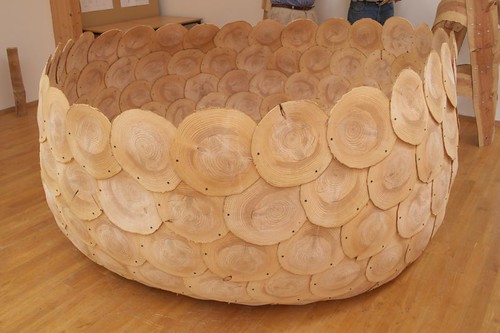 I'm sure I could do this to form a room for a woodland toilet!
I'm sure I could do this to form a room for a woodland toilet!
Of course there are more solid wooden buildings at the Woodland Enterprise Centre too, and they're just as impressive: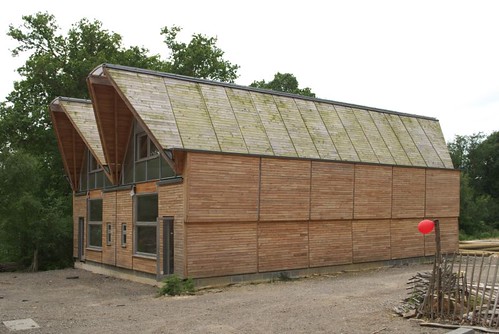
Mike
Saturday, 7 June 2008
A Wallis Grid
Subscribe to:
Post Comments (Atom)

6 comments:
Hi tracy and Mike, Thank you for this. I am going to have a go at a partition wall and then may make a platform
Nicholas Harris
Cool, send us a picture when you get it built.
Mike
i realise this is an old post, but hopefully someone will see it. i'm interested in the disc-to-dome technique. should his process work with any wood. does anything more than the outer bark need to be removed.
I think it would work best on wood that is less prone to splitting as it dries. But slicing very thin may compensate to some extent.
Mike
I had forgotten all about this! I love those thin discs of wood structures!
Lovely pictures!
Post a Comment